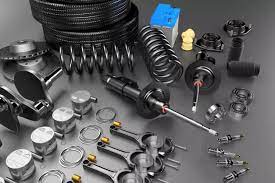
The history of the auto parts supplier industry is similar to the history of the auto industry itself. Henry M. Timken, Arthur Oliver Smith, and Albert C. Champion sold parts that they had designed. The Dodge and Fisher brothers marketed and sold their own parts. These companies then sold those parts to the auto manufacturers, who then bought out the other suppliers and formed larger companies. The same pattern is repeated today. Most of the production goes to the commercial installers, while the remaining 30% goes to the retail market.
Many repair shops don’t install parts purchased from a customer. In addition to a higher overhead cost, auto repair shops must also keep up with vehicle technical changes. The auto parts retailing industry can benefit from lower overhead costs and the fact that the vast majority of shoppers are do-it-yourselfers. However, do-it-yourself consumers may not understand this and end up buying parts of questionable quality that do not fit properly or won’t work at all.
A gas-powered vehicle is filled with hundreds of components. A car’s steering system and front and rear suspension systems contribute to the car’s ride and handling. It is vital to understand the workings of these systems if you want to make informed decisions. Both systems are integral to the overall functionality of the car and can differ in components. Knowing how these systems work is essential for safe and efficient driving. There are hundreds of different car parts available at an auto parts store.
Whether you’re a DIYer or a professional, auto parts stores offer a wide range of services to help you maintain your car. Some shops are equipped with trained technicians who can assist you in choosing the right part for your vehicle. If you’re not the best mechanic, you can use the search feature to look up more information about auto parts and maintenance. These stores also offer loan-a-tool program to their customers. Lastly, they often have replacement parts for small repairs and can recommend the best brands.
OE auto parts represent two-thirds of the entire auto parts industry and are delivered just-in-time or in bulk. Most of these auto parts are destined for final assembly. There are three basic points of origin for these parts. First, they come from Tier 1 suppliers. These suppliers sell the finished components directly to the vehicle manufacturers, while Tier 2 suppliers sell the raw materials and parts to Tier 1 companies. Last, there are accessories. They are sold after the original sale of a vehicle.
While the value of U.S./Canadian auto parts exports increased steadily over the past decade, they dropped significantly between 1995 and 2005. Ford Motor Company and General Motors combined accounted for eighty-six percent of the total. The same pattern can be seen in parts exports. While the United States and Western Europe remain the main export markets, emerging economies are the largest exporters of auto parts. You’ll be surprised at just how much more diverse the auto industry is now.

